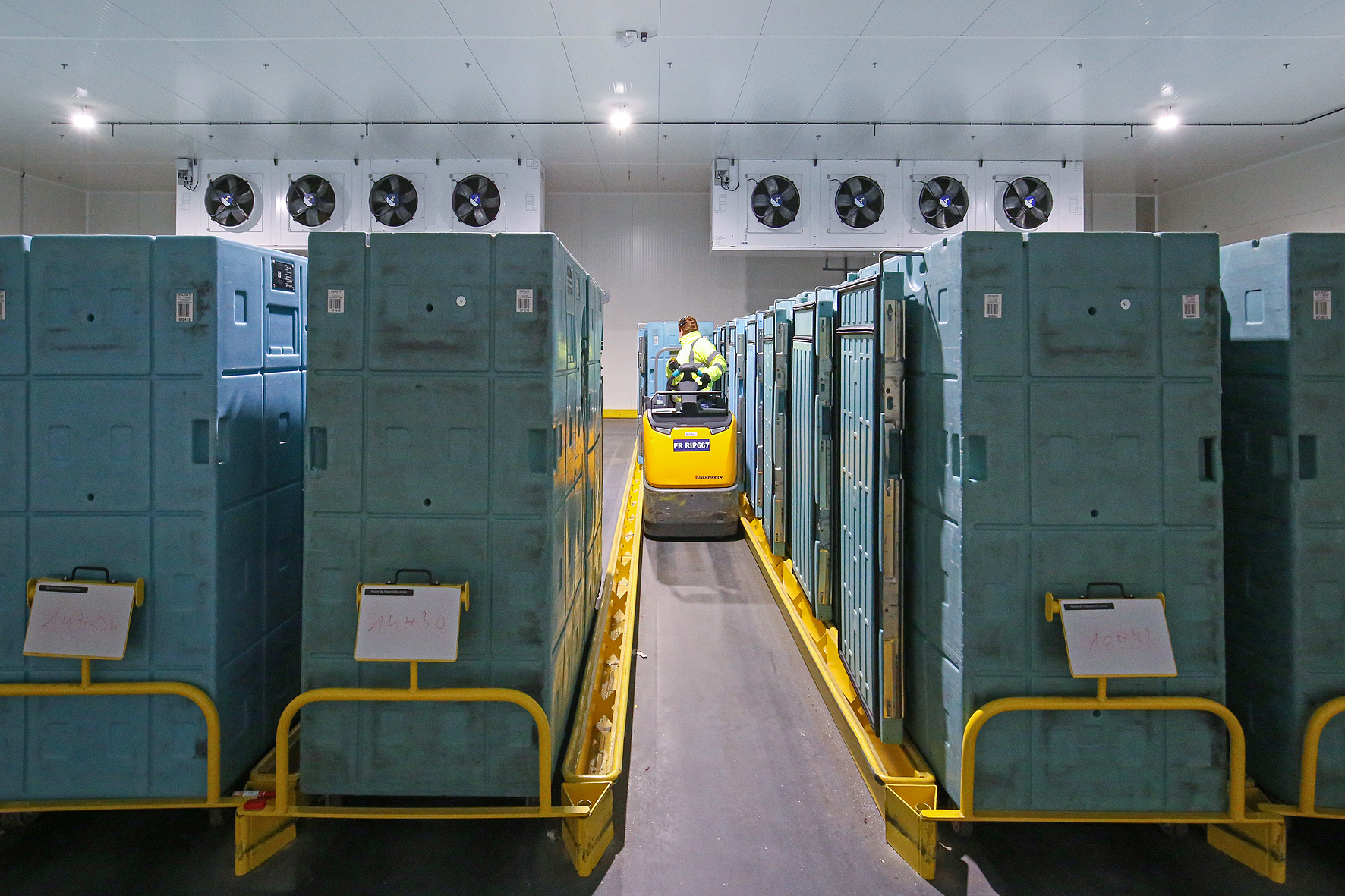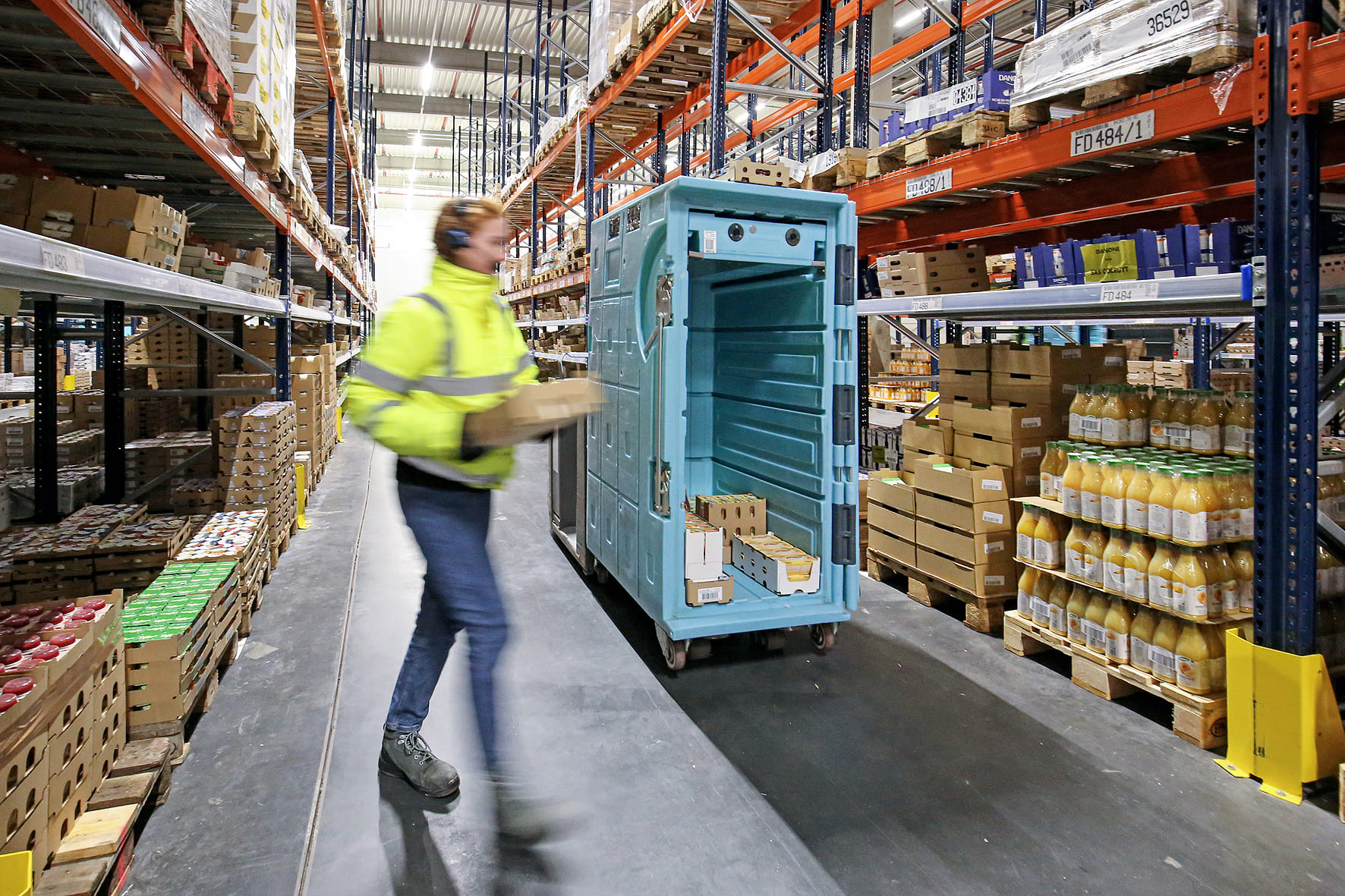How to optimize logistics flows and address supply chain challenges in food retail by 2025?
4 June 2025 by Edina GÁLFI
4 June 2025 by Edina GÁLFI

Supply chain management in large-scale retail is essential to ensuring product availability on store shelves—especially for fresh and frozen goods, which require strict cold chain control. The challenges of cold logistics are numerous, and optimizing supply chain processes remains a top priority for industry players.
According to the FAO (Food and Agriculture Organization of the United Nations), around 14% of the world’s food is lost before even reaching the market, amounting to $400 billion per year. The entire supply chain is affected—from producers to processors and distributors.
In this article, we’ll explore how supply chains work in large-scale retail, highlight best practices to reduce cold chain failures, and look at 2025 logistics trends in food distribution, with a particular focus on sustainability.
Supply chain management involves overseeing the flow of dry, fresh, and frozen products from suppliers to the end consumer. This includes every stage, from harvest to plate.
Supply chains in large-scale retail rely on complex, well-coordinated logistics flows—executed in very short timeframes. These flows include receiving, storage, order preparation, transportation, and the handling of returns and unsold items.
For fresh and frozen products, logistics must be tightly integrated with cold chain management, ensuring that goods arrive in optimal condition.

Supply chain processes must be:
One of the main goals is to ensure product availability on shelves while minimizing stockouts.
Here are some solutions to improve supply chain efficiency in large-scale retail:
Optimizing supply chain processes helps reduce costs, improve customer satisfaction, and minimize stockouts. For temperature-sensitive goods and products with short shelf lives, optimization is even more critical.
The retail sector is constantly evolving, with new challenges emerging to meet consumer expectations and regulatory requirements. Companies must adapt to a rapidly changing environment and prepare for future demands—especially in terms of sustainability, logistics innovation, and technology.
Sustainability has become a top priority for many retail companies. Cold logistics, in particular, is often criticized for its environmental impact. Optimizing logistics processes helps reduce that impact while improving operational efficiency.
Solutions such as Olivo insulated containers contribute to more sustainable logistics by offering thermal autonomy without relying on energy-consuming refrigeration units. These containers keep temperatures stable for several hours, reducing energy use and the carbon footprint of transport.
What if you could lower costs while adopting greener logistics?


D’By 2025, several trends will shape the evolution of retail supply chains. Key challenges—like cold chain management, stock control, and flow optimization—will be central to business strategies.
To be effective, it’s important to focus on the most relevant data: temperature, location, door openings, and alerts. Gathering too much unnecessary information can make it harder to make quick decisions. A structured approach helps turn data into real operational value.
Beyond operational benefits, multimodal transport encourages the pooling of merchant flows between multiple players, helping reduce costs and optimize resources. This collaborative mindset supports the emergence of collective logistics intelligence, increasingly sought after to meet both economic and environmental challenges.
Large-scale retail supply chains depend on fluid, responsive, and precisely synchronized logistics, especially for temperature-sensitive goods. To keep products available on shelves while minimizing waste and extra costs, several key levers can be activated:
These pillars help retailers boost overall supply chain performance while meeting new sustainability and customer satisfaction expectations.
Looking to optimize your temperature-controlled supply chain?


